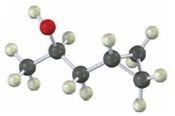
Concept explainers
a)

Interpretation:
Starting from any compound having four or less number of carbon atoms how the compound shown can be prepared is to be stated.
Concept introduction:
A cyclopropane ring is formed in Simmons-Smith reaction when an alkene is treated with CH2Cl2/Zn-Cu couple. Higher
To state:
Starting from any compound having four or less number of carbon atoms how the compound shown can be prepared.
b)

Interpretation:
Starting from any compound having four or less number of carbon atoms how the compound shown can be prepared is to be stated.
Concept introduction:
The compound shown has a keto group at C2 and a double bond between C5 & C6. The keto group can be introduced by hydration of an alkyne with aqueous H2SO4 in the presence of HgSO4. An enol obtained during hydration upon tautomerization yields the
To state:
Starting from any compound having four or less number of carbon atoms how the compound shown can be prepared.
Want to see the full answer?
Check out a sample textbook solution
Chapter 9 Solutions
Organic Chemistry - With Access (Custom)
- (c) (4pts) Mechanism: heat (E1) CH3OH + 1.5pts each _E1 _ (1pt) Br CH3OH (d) (4pts) Mechanism: SN1 (1pt) (e) (3pts) 1111 I H 10 Ill!! H LDA THF (solvent) Mechanism: E2 (1pt) NC (f) Bri!!!!! CH3 NaCN (3pts) acetone Mechanism: SN2 (1pt) (SN1) -OCH3 OCH3 1.5pts each 2pts for either product 1pt if incorrect stereochemistry H Br (g) “,、 (3pts) H CH3OH +21 Mechanism: SN2 (1pt) H CH3 2pts 1pt if incorrect stereochemistry H 2pts 1pt if incorrect stereochemistryarrow_forwardA mixture of butyl acrylate and 4'-chloropropiophenone has been taken for proton NMR analysis. Based on this proton NMR, determine the relative percentage of each compound in the mixturearrow_forwardQ5: Label each chiral carbon in the following molecules as R or S. Make sure the stereocenter to which each of your R/S assignments belong is perfectly clear to the grader. (8pts) R OCH 3 CI H S 2pts for each R/S HO R H !!! I OH CI HN CI R Harrow_forward
 Organic ChemistryChemistryISBN:9781305580350Author:William H. Brown, Brent L. Iverson, Eric Anslyn, Christopher S. FootePublisher:Cengage Learning
Organic ChemistryChemistryISBN:9781305580350Author:William H. Brown, Brent L. Iverson, Eric Anslyn, Christopher S. FootePublisher:Cengage Learning



